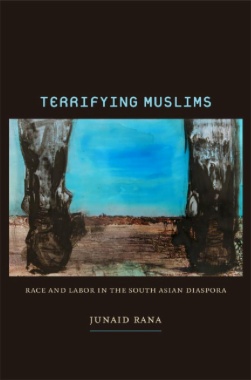Terrifying Muslims highlights how transnational working classes from Pakistan are produced, constructed, and represented in the context of American empire and the recent global War on Terror. Drawing on ethnographic research that compares Pakistan, the Middle East, and the United States before and after 9/11, Junaid Rana combines cultural and material analyses to chronicle the worldviews of Pakistani labor migrants as they become part of a larger global racial system. At the same time, he explains how these migrants’ mobility and opportunities are limited by colonial, postcolonial, and new imperial structures of control and domination. He argues that the contemporary South Asian labor diaspora builds on and replicates the global racial system consolidated during the period of colonial indenture. Rana maintains that a negative moral judgment attaches to migrants who enter the global labor pool through the informal economy. This taint of the illicit intensifies the post-9/11 Islamophobia that collapses varied religions, nationalities, and ethnicities into the threatening racial figure of “the Muslim.” It is in this context that the racialized Muslim is controlled by a process that beckons workers to enter the global economy, and stipulates when, where, and how laborers can migrate. The demonization of Muslim migrants in times of crisis, such as the War on Terror, is then used to justify arbitrary policing, deportation, and criminalization.
- Contents
- Acknowledgments
- Introduction: Migrants in a Neoliberal World
- Part I: Racializing Muslims
- 1. Islam and Racism
- 2. Racial Panic, Islamic Peril, and Terror
- 3. Imperial Targets
- Part II: Globalizing Labor
- 4. Labor Diaspora and the Global Racial System
- 5. Migration, Illegality, and the Security State
- 6. The Muslim Body
- Conclusion: Racial Feelings in the Post–9/11 World
- Notes
- References
- Index

